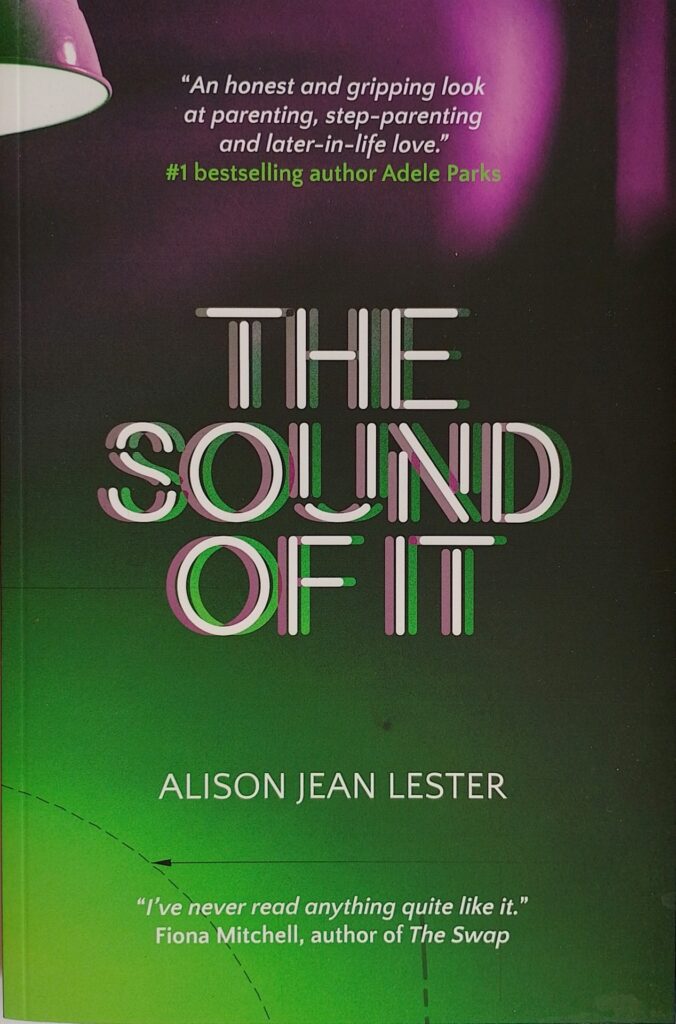First published 2022. Bench Press paperback, 2022, pp 200, c.70,000 words.
There is a nice set up here: two families are being brought together as two single-parents bond. Su is a divorcee with a teenage daughter, Jeremy a widower with two sons, one a teenager, the other a child. Neither has a house large enough for all, so they decide to build a new one. Anyone who has watched one of those reality house building shows on TV will know how fraught with potential disaster that can be. This then is a story of family relationships and grand designs. Added to the mix are the divorced father of the teenage girl and the father and disabled brother of the widower.
Su is a sound designer – she has a successful business creating all those little sound effects that fill in the background of adverts, TV shows and films, as well as art projects. The widower is a multi-failure entrepreneur from a moderately wealthy background.
Unfortunately this imbalance is consistent throughout the book. All the principle men here have childish characters: either bullies, philanderers, creeps or weaklings. Some have more than one of these to their credit. The women, on the other hand, are adults: confident, caring, supportive, nurturing, assertive, etc. It becomes hard to see why the women have anything to do with the men. Perhaps that is their only weakness – they can’t help fancying them. Oh, yes, male children are adorable too, as long as they are under ten.
The daughter’s name is written as Caoimhe, but apparently pronounced ‘Kwee-vah’ [p24]. You probably knew that and had no problem with it if you are Irish, like her father, Sean, presumably is. For the rest of us it is a big impediment to the flow of our reading. I gave up and called her Com-bee in my head. The daughter is given a weird YouTube condition called ASMR or autonomous sensory meridian response, which is another link to the sound-world. Having not heard of this before, I had to look it up. It is not a medical condition but a claimed exaggerated form of a frisson – that feeling we get when we hear some particular sound. Apparently a few people claim to be particularly sensitive to certain sounds and get hooked on the pleasure of listening to them, akin to sexual orgasm according to some, which probably accounts for the on-line multiplicity of videos.
Despite the pigeon-holing of the sexes, there are some nicely handled scenes of relationships between the various principles: dealing with an ex or a father in-law, for example, and the lure of a pubescent girl. Some seemed less plausible, notably the eight-year-old boy immediately bonding with his father’s new partner. It is highly unlikely that the boy would switch so quickly to calling her ‘mummy’.
Much of the writing is rather pedestrian with excessive dialog. Having characters saying ‘good morning’ to each other seems like filler [e.g. p154]. Usually such banalities of everyday conversation are left unwritten. Similarly spelling out ‘I have some great friends from university, most of whom have ended up in London’ [p67] is quite unnecessary. Some metaphors seemed inappropriate, e.g. ‘they tumbled like Lemmings into the sea.’ [p88] when what is being said is that we all die. An occasional Americanism creeps in, e.g. ‘drywall’ instead of plasterboard [p64]. There are a couple of recipes described [e.g. p63] which might illustrate competence in the kitchen and a love of fine dining but are otherwise irrelevant to the story. Occasionally Lester hits the spot: ‘The emotion [shame] was a reaction to how things might look to others.’ [p86]. There is also a well-drawn erotic moment that is interrupted by a child. [p36]
Given the title, and the principle character’s profession, I was expecting much more to be made of sound in the writing and the plotting. The book is more to do with appearance than anything aural, other than the daughter’s condition which does form a plot element. There is nothing I detected in the writing that gave character, place or situation a characteristic sound. Even the protagonists particular profession is largely irrelevant – she could have been a garden designer.
Most of the book is a duet between the Su and Jeremy. Just once there was a switch to the daughters point-of-view [p117], and that contained an unlikely thought pattern for a sixteen-year-old.
This is one for lovers of family dramas and those who believe all men are mostly bastards.
Author’s website: https://www.alisonjeanlester.com/
Reviews on Amazon of the book: https://www.amazon.co.uk/gp/product/B0BKN25YNK/ref=dbs_a_def_rwt_bibl_vppi_i0
Others’ reviews of the book: https://www.goodreads.com/book/show/63261427-the-sound-of-it?ref=nav_sb_ss_5_15
© William John Graham, July 2023

